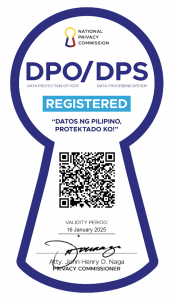The National Capital Region (NCR)

The National Capital Region (NCR), also known as Metropolitan Manila, is the country’s political, economic, and educational center. The smallest region in the Philippines, it is the most densely populated region which is home to over 13 million Filipinos. The National Capital Region (NCR) is the only region in the country without any province. It is subdivided into 17 local government units (LGUs) comprising 16 cities and one (1) municipality: Caloocan, Malabon, Navotas, Valenzuela, Quezon City, Marikina, Pasig, Taguig, Makati, Manila, Mandaluyong, San Juan, Pasay, Parañaque, Las Piñas, Muntinlupa; Pateros is the lone municipality in the region.
Population
The National Capital Region has a population of 13,484,462 according to the 2020 National Census. The population of NCR denotes a positive growth rate of 0.97% annually from 2015 to 2020. It is the most populous region in the Philippines, the 7th most populous metropolitan area in Asia, and the 3rd most populous urban area in the world.
Quezon City had the biggest population in Metro Manila’s 16 highly urbanized cities (HUCs) in 2020, with 2,960,048 people, followed by the City of Manila with 1,846,513 people and the City of Caloocan with 1,661,584 people. San Juan has the least population of 126,347 people.
Economy
The City of Manila produces industrial-related products such as chemicals, textiles, clothing electronic goods, food, beverages, and tobacco products. The growth in services and industry fueled the expansion in NCR’s construction and manufacturing — making NCR the largest contributor to the country’s production of goods and services at 31.5% of GDP.
As of 2021, there has been 201,080 businesses established in the NCR, which are categorized into four (4) classifications: Micro, Small, Medium, and Large. These establishments generated 33.6% of total employment.
Most multi-national company offices and embassies are situated in Makati, the country’s financial center for business and economic opportunities. Located in the heart of Makati the famous Philippine Bank of Communications (PBCOM) tower, Ayala Center, composed of Glorietta and Greenbelt, and the Rockwell Center. Lucrative location for industries in NCR also includes Bonifacio Global City in Taguig, Ortigas Business Center straddling the cities of Mandaluyong and Pasig, Alabang in Muntinlupa, Triangle Park and Eastwood City in Quezon City, Manila Bay City Reclamation Area in the cities of Pasay.
A city of great diversity, Metro Manila is also a place of attraction rich in historical, cultural, and religious influences. Interesting places include Rizal Park, The National Museum, Manila Bay, the walled city of Intramuros, the Cultural Center of the Philippines in Makati, Quezon City Memorial Circle, and Ninoy Aquino Wildlife Center, and as well as the shopping centers in Ortigas Center.
New developments seeking to become vibrant business centers of their own are Bonifacio Global City in Taguig; Eastwood City, Neopolitan Business Park, and Triangle Park in Quezon City; the Manila Bay City Reclamation Area in the cities of Pasay, Parañaque, and Las Piñas; and Alabang Estates, Madrigal Business Park, and Filinvest Corporate City in Muntinlupa. The traditional business center of Chinese-Filipino businessmen and the country’s CBD prior to the development of the Makati CBD was the Binondo District in the City of Manila.



